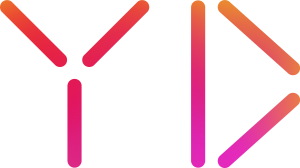Journalism is the first draft of history.
Make your mark.
Journalism refers to the gathering of socially relevant information with the aim to inform the public’s decisions. In essence, this means that journalists wield the power to influence the future direction of people, communities and even countries.
For the public to make informed decisions that benefit everyone, they need the most accurate picture of the any given situation, thus making journalism the vital link between decision and the future of people.
To make this link as effective as possible, there are a few key objectives that have to be fulfilled:
- The journalistic work has to be objective, meaning based on facts only, free of any personal thoughts or feelings.
- Everyone has the right to fair comment and criticism.
- Information that presents an opinion, subjective or fictional information has to be clearly marked as such.
Science is a system of knowledge about the essential properties, causal relationships and laws of nature, technology, society and thought. This system is expressed in the form of terms, categories, measurements, laws, theories and hypotheses.
Research begins with a question, which may arise from previous research, a discovery, or everyday life. This question needs to pose a concise objective. It has to be relevant, limited to a precise theme and complex enough to warrant research. It’s also important that the objective can’t be answered with “yes” or “no”.
Research can be conducted using any method that fits your objective. It is only essential that the method leads to a hypothesis that applies the principles of journalism and is verifiable and comprehensible by other people.
Basic research is guided by the pure interest in knowledge and tries to track down generally valid connections and laws.
Applied research is geared towards practice-relevant and useful results (e.g. medical research). These directions can provide input for each other and benefit from each other. To enable this transfer, you can choose from different methods to arrive at your conclusion. There are qualitative methods e.g. interviews & observations, or quantitative, e.g. databases & large-scale studies.
After you have defined your objective, it’s time think about the general structure of your work. You can choose the structure yourself, but it is advisable to use the following points:
- Introduction & Background: Introduce the objective and explain why you choose it and what it is about.
- Methods: Explain how you intended to arrive at your conclusions. This is important to make it as comprehensible as possible for other people. It also serves as a sign your precision and correct conduct.
- Research: Present your research and how it get’s you closer to your objective. It’s best to view it as a journey with multiple stops. Build your argument step by step.
- Interpretation: Explain what your results mean in light of your objective.
- Restrictions & Assessment: reflect on the strengths & weaknesses of your work. Explain potential future research opportunities.
- Conclusion: Conclude with a final statement of your work and add anything else you want to say.
We already mentioned that research has to be comprehensible. This is achieved by making your work fully transparent, meaning you need to state where everything single piece of knowledge is from and who wrote it.
It is important to state the ORIGINAL author, the ORIGINAL publisher, the exact title including the page number of the cited knowledge and the ORIGINAL date of publication. This means you need to make sure that you don’t cite a source from a work that cited the source itself. Always go to the original source. Word processors like Microsoft Word have handy built-in tools to make managing citations relatively simple. If you don’t want to deal with all of that, we understand. That’s why we offer a cheap way to get to the original source.
The moment you have done your work is also the moment the work starts for other people. Remember all of that transparency and comprehensibility we talked about? This is the moment it becomes really important. In the process of the peer-review your work gets picked apart and analysed by other researches. After all we want to know if your conclusions are sound and can be used to inform other research.
This is what we do here at YD, if you decide to publish your work at y-d.at/publish . We’ll check your sources and quotations and if your content is understandable and reasonable for the reader. We will not alter your work, we will just make sure that the guidelines are met. When you submit your work we ask you to attach an abstract to your work, which we may alter a bit to make it understandable and fit into our journal.
